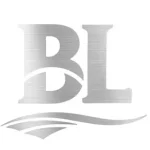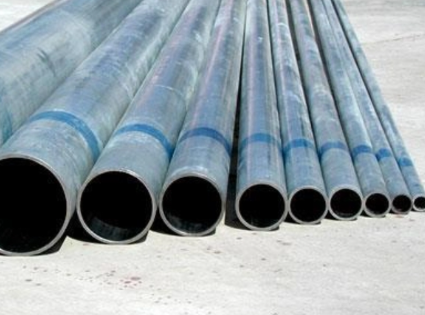Hot-dip galvanizing remains one of the most reliable and cost-effective methods to protect steel pipes against atmospheric, splash, soil, and industrial corrosive environments. Two globally recognized specifications—ASTM A123 and ISO 1461—define the performance and inspection criteria for zinc coatings applied by the hot-dip process. While these standards share the same objective—durable corrosion protection—their terminology, thickness criteria, sampling, and acceptance approaches differ in ways that matter for procurement, compliance, and lifecycle cost planning.


This guide compares ASTM A123 and ISO 1461 in practical, engineer-friendly terms, focusing on steel pipes and tubular products used in construction, mechanical systems, infrastructure, and fabrication. It also explains how to align specification choices with project requirements, especially when projects span multiple regions or require harmonized quality documentation.
Scope and Applicability
ASTM A123, formally “Standard Specification for Zinc (Hot-Dip Galvanized) Coatings on Iron and Steel Products,” covers a wide range of fabricated iron and steel items, including structural shapes, plates, bars, and tubular products. It is widely referenced in North America and by international clients who align with ASTM practices. ISO 1461, “Hot dip galvanized coatings on fabricated iron and steel articles — Specifications and test methods,” serves a similar role globally, especially in Europe, the Middle East, and parts of Asia-Pacific. Both exclude continuously galvanized sheet and wire products and focus on batch hot-dip galvanized articles.
Key Technical Differences in Criteria
Both standards define minimum coating thickness, appearance, freedom from defects, and test methods. However, nuances exist in how thickness categories are grouped, how samples are selected, and how acceptance is judged. For steel pipes, understanding the minimum local and average coating thickness and whether internal surfaces must be coated (depending on process and design) is critical.
| Parameter | ASTM A123 (Typical) | ISO 1461 (Typical) | Notes for Steel Pipes |
|---|---|---|---|
| Scope | Batch galvanizing of iron/steel products incl. tubulars | Batch galvanizing of fabricated iron/steel articles incl. tubes | Both exclude continuously galvanized sheet/wire |
| Coating Thickness Basis | Minimum average and minimum local; categories by material thickness | Minimum local values with guidance on mean values; categories similar | Pipe wall thickness drives target zinc thickness |
| Sampling & Acceptance | Defines lot, sampling count, and acceptance criteria | Defines batches, test pieces, and acceptance tolerances | Agree inspection points for long pipes and fittings |
| Surface Quality | Free of uncoated areas, runs, blisters that affect use | Similar; cosmetic defects allowed if function unaffected | Internal bore finish may vary; specify if critical |
| Adhesion & Integrity | No flaking/peeling under normal handling; bend tests where applicable | No flaking/peeling; reference to mechanical integrity checks | Threaded pipe ends typically protected or machined post-galvanizing |
Typical Coating Thickness Ranges for Pipes
While exact minima depend on product category and wall thickness, hot-dip galvanized pipe commonly targets 70–100 µm mean coating thickness for general outdoor service, with higher thickness for marine, industrial, or soil-contact exposure. Heavier sections and longer immersion times can yield thicker layers, but design and drainage provisions matter to ensure uniformity.
| Pipe Wall Thickness (reference) | ASTM A123 typical minimums | ISO 1461 typical minimums | Service Considerations |
|---|---|---|---|
| ≤ 3 mm | ~45–55 µm local minimum | ~45–55 µm local minimum | Light structural, indoor or mild outdoor |
| > 3–6 mm | ~55–70 µm local minimum | ~55–70 µm local minimum | General outdoor structural and piping |
| > 6 mm | ~70–85 µm local minimum | ~70–85 µm local minimum | Marine/industrial zones; extended service life |
Inspection and Testing Practices
Both standards recognize magnetic thickness measurement (e.g., Type 2 electronic gauges), gravimetric methods, and visual assessment. For pipes, good practice is to designate multiple spots around the circumference and along the length to capture potential drainage or edge effects. ASTM A123 lays out lot-based sampling and acceptance; ISO 1461 similarly defines batches and test specimen selection, often emphasizing local thickness minima on critical surfaces. Minor cosmetic features—e.g., small runs, roughness, or matte/bright variations—are generally acceptable if they do not impair corrosion protection or fit-up.
Design for Galvanizing: Pipe-Specific Considerations
- Provide vent/drain holes for assemblies to ensure safe immersion, uniform zinc flow, and internal coverage where specified.
- Clarify whether internal bore must be galvanized; some service conditions require internal coatings or post-treatments.
- Protect threads or machine after galvanizing to ensure thread engagement and dimensional integrity.
- Specify surface preparation for silicon-killed steels to control coating growth and aesthetics (Sandelin effect).
Durability and Service Life
Service life is a function of zinc thickness and environment. In rural or mild urban atmospheres, 70–85 µm zinc can deliver several decades of protection before first maintenance. In marine splash zones or aggressive industrial atmospheres, additional thickness, duplex coatings (zinc plus paint), or targeted post-treatments can extend durability. Both ASTM A123 and ISO 1461 reliably correlate thickness with longevity; the choice between them often follows regional contract norms rather than performance gaps.
Documentation, Compliance, and Traceability
For international projects, harmonized documentation is essential. Clear mill test reports for the pipe substrate, galvanizing certificates indicating coating thickness results, and inspection records aligned with the chosen standard help avoid delays. Where a project references one standard but the supply base uses another, an equivalence matrix and pre-award qualification can reconcile differences in sampling, thickness criteria, and acceptance tolerances.
Quick Selection Tip: If your project is in North America or follows ASTM procurement language, specify ASTM A123 with any supplemental requirements for internal bore coverage and threading. For European or global tenders under ISO frameworks, specify ISO 1461 with matching inspection plans. In both cases, align wall thickness categories to achieve the target zinc thickness your service environment requires.
Cost and Lifecycle Considerations
Hot-dip galvanizing delivers a favorable total cost of ownership compared to paint-only systems, especially for pipes exposed to weathering or condensation cycles. Although initial costs vary with steel chemistry, fabrication complexity, and regional zinc pricing, the reduction in repainting cycles and downtime is significant. Standard choice (ASTM A123 vs. ISO 1461) rarely changes cost materially; rather, design for galvanizing and coating thickness selection drive both performance and price.
How BaoLi Iron & Steel Co.,Ltd Supports Your Specification
BaoLi Iron & Steel Co.,Ltd is a China-based manufacturer supplying galvanized steel pipes and related products to global markets. We combine mill-grade substrate control with rigorous galvanizing process oversight to meet either ASTM A123 or ISO 1461, as specified. Our engineering team supports material selection, wall thickness optimization, and coating target definition to match your corrosion category and expected service life.
- Custom dimensions and grades for pipes, tubes, and structural members.
- Guidance on venting, drainage, and thread protection for galvanizing.
- Quality documentation aligned to your regional standard, including coating thickness reports.
- Global logistics and contract management for on-time, compliant deliveries.
Explore our galvanized pipe offerings and specification options here:
galvanized steel pipes and
galvanized steel pipe.
Practical Checklist for Specifiers
- Select the governing standard (ASTM A123 or ISO 1461) based on project location and contractual norms.
- Define service environment category and corresponding target zinc thickness.
- Specify internal bore requirements for pipes and any post-galvanizing machining.
- Include inspection plan: sampling locations, gauge type, acceptance criteria.
- Align documentation: mill certificates, galvanizing certificates, and traceability.
- Confirm packaging and handling to protect coating integrity during shipment.
Example Specification Snippet:
“Supply hot-dip galvanized steel pipes per [ASTM A123 | ISO 1461], meeting minimum local coating thickness appropriate to pipe wall section. Internal bore galvanizing: [Required/Not required]. Threads: [Machine after galvanizing/Protect with caps]. Provide coating thickness reports and visual inspection records. Target mean coating: [e.g., 85 µm] for C3–C4 environments.”
ASTM A123 vs. ISO 1461: Which Should You Choose?
Performance overlaps considerably when equivalent thickness targets and inspection rigor are applied. Choose ASTM A123 when North American codes, client preferences, or existing documentation systems point to ASTM. Choose ISO 1461 for European-aligned projects or multinational frameworks. The critical factor is translating environment-driven durability targets into coating thickness categories, then embedding clear inspection and documentation requirements.
Conclusion
Both ASTM A123 and ISO 1461 provide robust guidance for hot-dip galvanized coatings on steel pipes. The best outcomes come from early design-for-galvanizing decisions, explicit internal/external coverage requirements, and disciplined inspection plans. BaoLi Iron & Steel Co.,Ltd stands ready to support your projects with customized pipe dimensions, technical guidance, and globally compliant galvanizing, ensuring reliable corrosion protection and predictable lifecycle costs.



